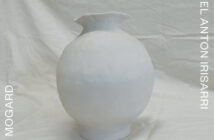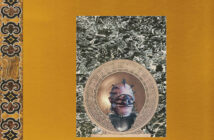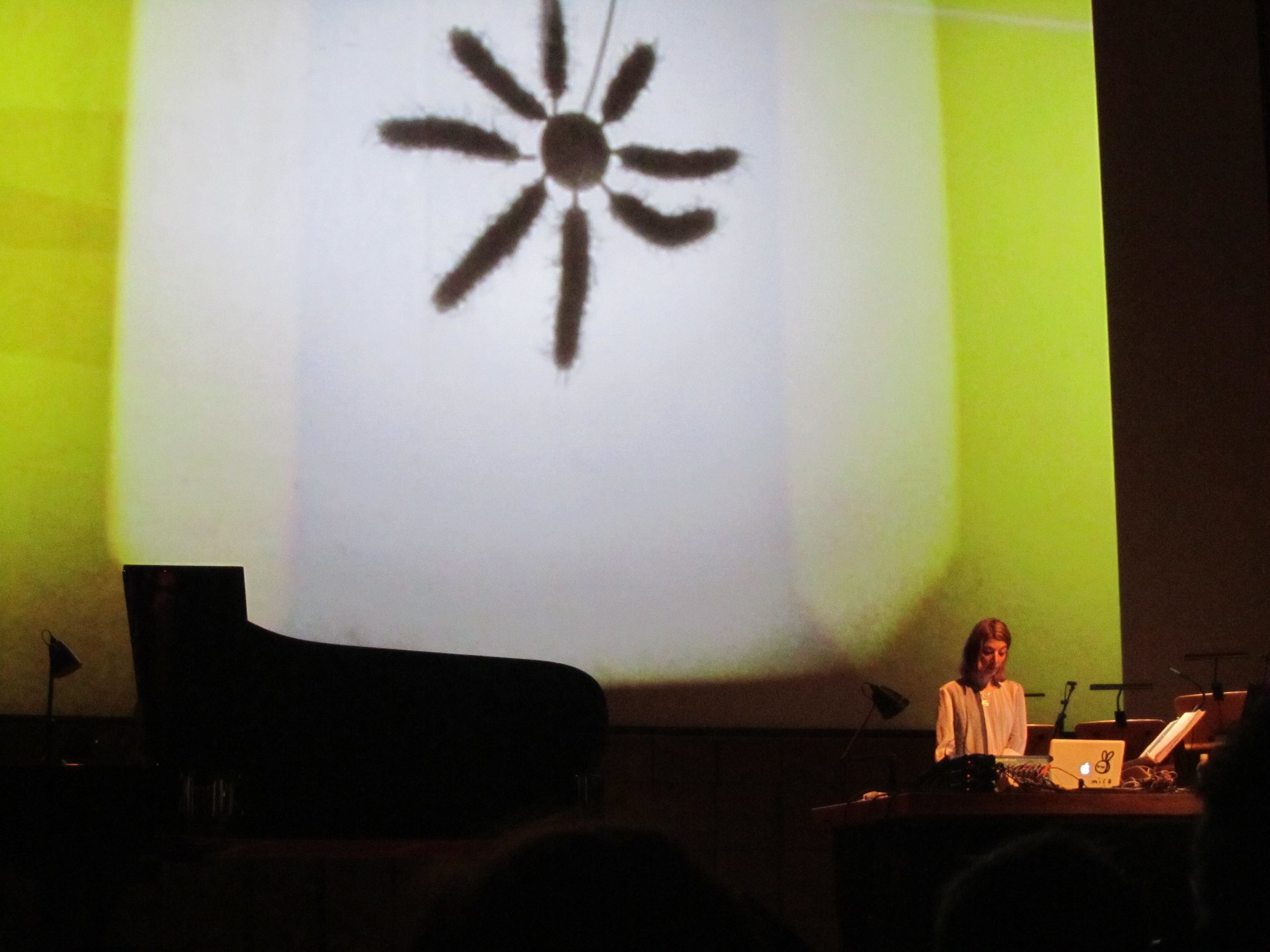
The Metropolis Festival, presented by the Melbourne Symphony Orchestra, is a Festival of New Music. Last year they brought out Steve Reich. This year they surprised with some bold and unexpected decisions, people who you wouldn’t traditionally equate with modern composition. With three artists in residence from London they featured performances from prodigious composer, conductor and pianist Thomas Ades, sample-based electronic producer Matthew Herbert and idiosyncratic electronic artist Mira Calix. Bob Baker Fish managed to get along to a couple of performances from the latter two.
MATTHEW HERBERT – The End Of Silence – Melbourne Recital Centre
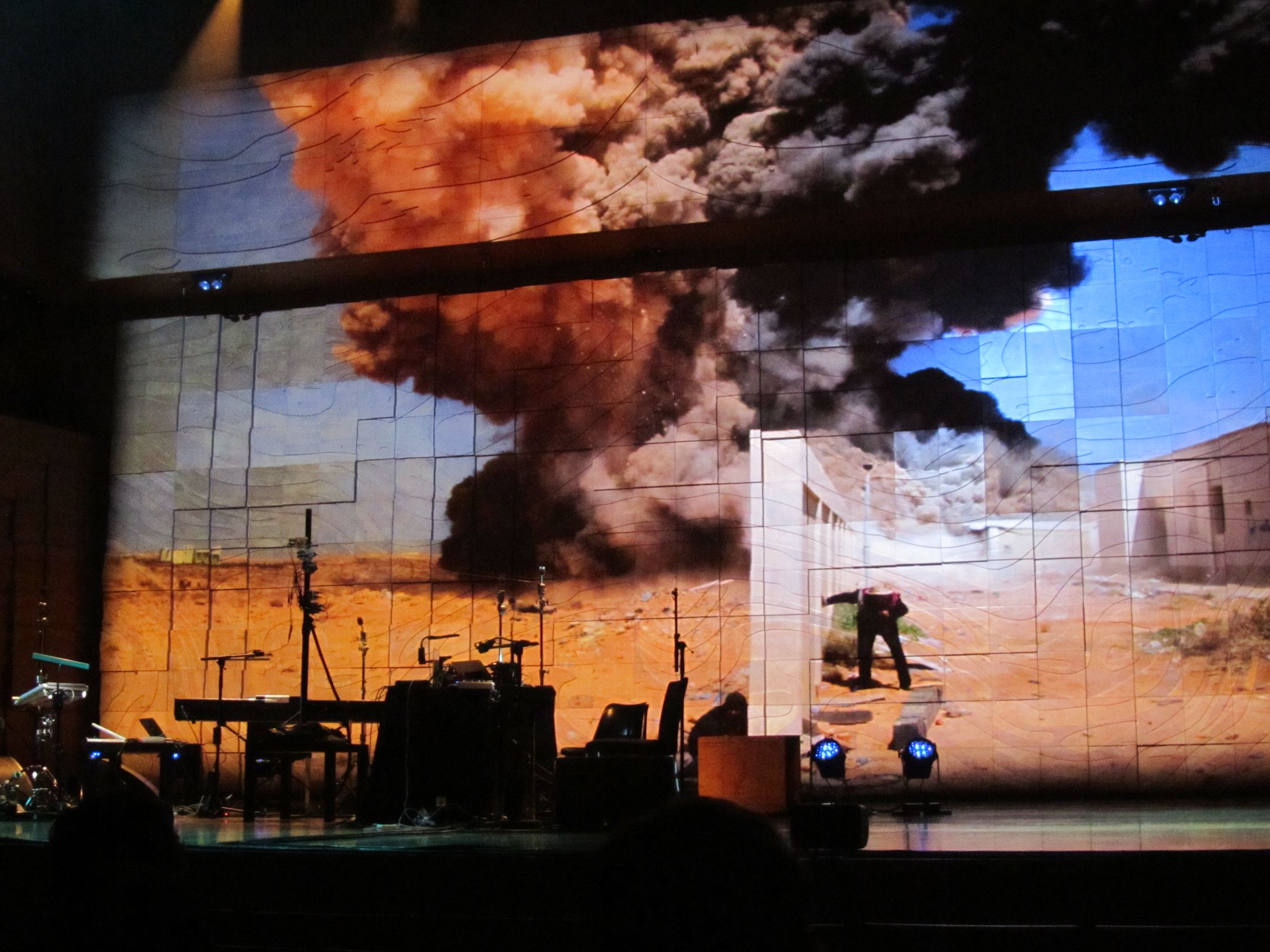
UK producer Matthew Herbert has taken something of a diversion of late, his One trilogy of albums demonstrating a desire to use strange found sounds and field recordings to recontextualise sound or make political statements. It’s a world away from the jazz tinged electro torch songs of Bodily Functions, or even his adventures with his big band.
Tonight’s performance stems entirely from a 10 second recoding Herbert was sent of photographer Sebastian Meyer being bombed by a pro Gadaffi plane in Libya in 2011. He strides onto stage to rapturous applause and offers “for some reason I just want you to know that all of the sounds we are playing tonight all come from the recording, nothing else, and we’re playing them live.†The “we’ is his band, and the stage set-up is unlike anything you’ve ever seen: midi percussion, sampling keyboard, a desk with all manner of electronic trickery for Herbert, and well, a guy on wires.
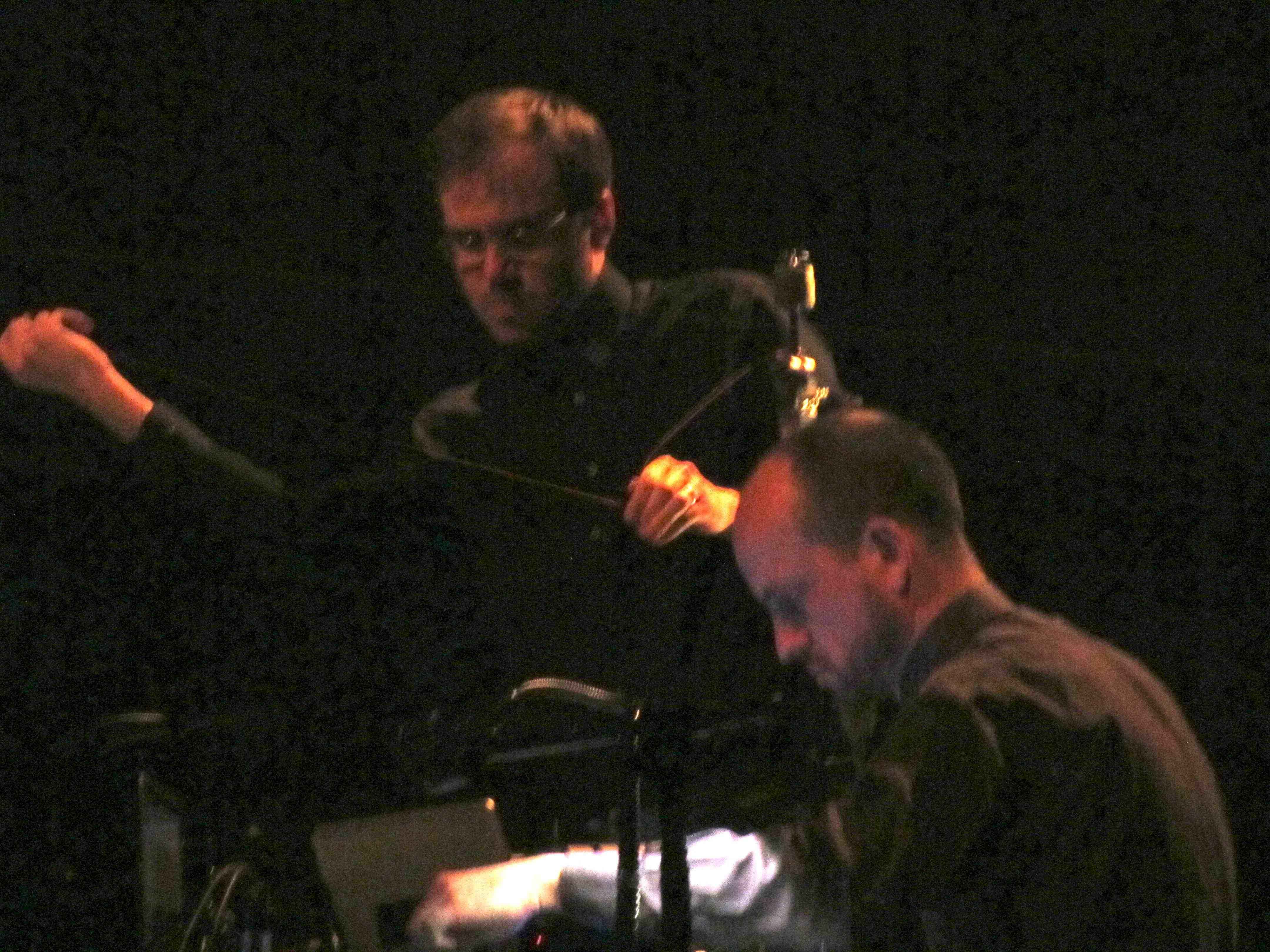
The lights are dim, the mood sombre, and as they play the admittedly terrifying initial recording, with its thunderous boom, strange whistle and questionable audio quality that peaks out, the wire guy manipulates its pitch by pulling down at the wire.
We begin in a war zone and then comes the deconstruction, as over the next 50 odd minutes the band take individual parts away, chew them up, process them and then send them back to see how they interact with what their colleagues are doing. At times it meanders, as if the band are searching, though percussion from shrapnel tends to bring a backbone for the rest of the band to swing to. We never get that patented Herbert electro swing, but then surely there would be a little distasteful – jigging along to an instrument of such horrific violence and suffering.
Yet there is cohesion, or at least the threat of it, in particular some incredible evocative sub bass rumblings. The band plays with density, and texture, though also occasional (possibly unintentional) frightening increases in volume. They’re at their best when they’re playing their sounds in a musical way, a thin whistle becomes a melodic piano loop, the impact, the bass drum, the shrapnel percussion and the white noise gristle on the side. It’s a bold and unconventional performance that demonstrates that in Herbert’s hands you shouldn’t draw conclusions too quickly – sound is complex and multi layered, continuing to evolve, and as this performance suggests, so too is meaning.
MATTHEW HERBERT – ONE PIG – METROPOLIS FESTIVAL – Melbourne Recital Centre
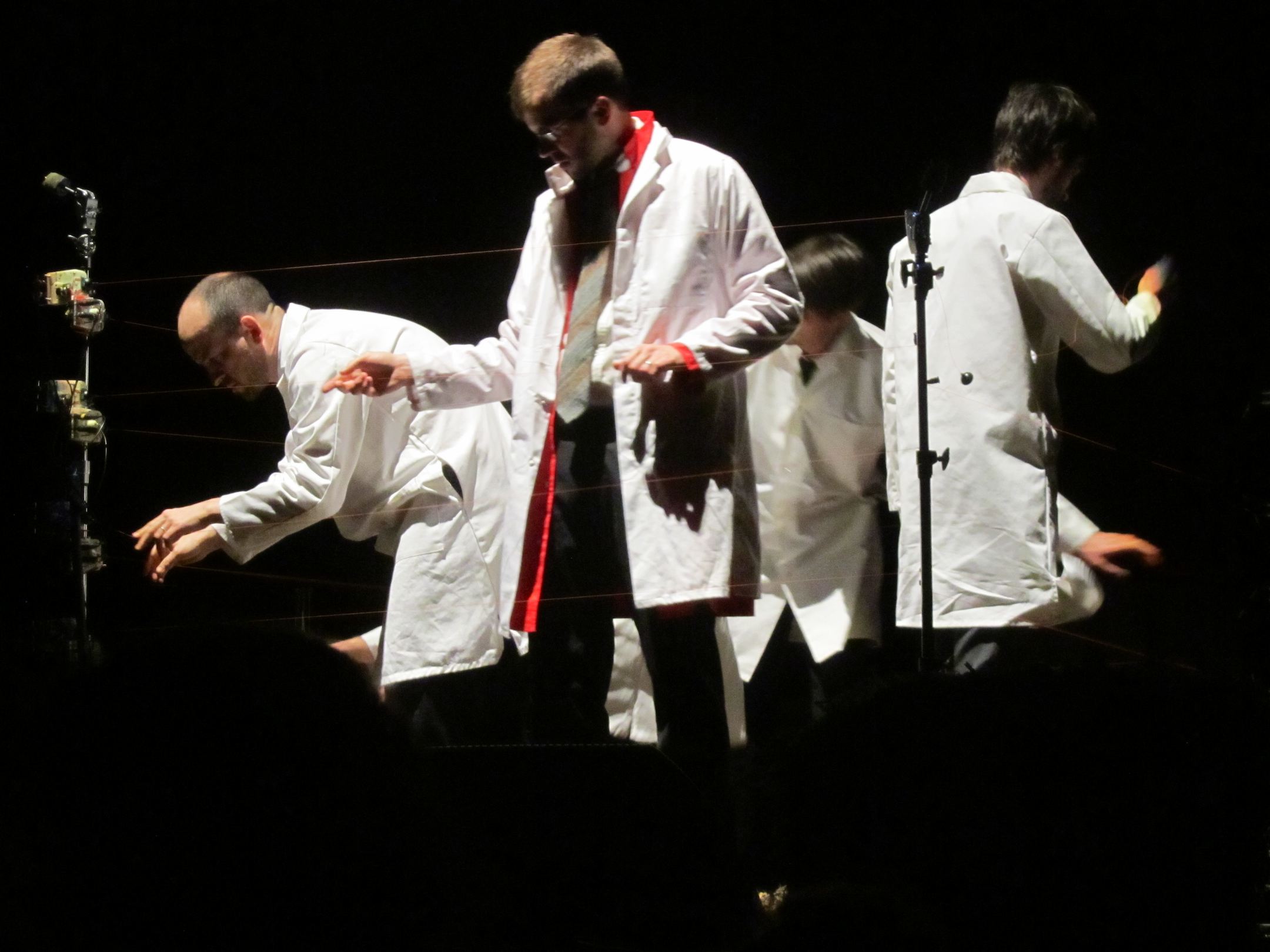
Dressed in a shirt and tie, over which he dons a white butchers coat, socio political composer, sampler, electronic music producer and now theatrical showman Matthew Herbert takes to the stage with his quintet in tow, to rapturous applause.
One Pig is the title of Herbert’s controversial latest album, with all sounds gathered from the life cycle of a pig, sonically documenting its development over twenty weeks, before its eventual trip to the abattoir, and ultimately the plate.
In the centre of the stage there’ what can only be described as a sty, a fence like structure, made up of a series of wires around four metal posts. Band member (and inventor of this instrument) Yann Seznec, triggers samples, and adjusts pitch, volume and tempo, by grabbing manically at the wires, and it’s an incredible performance. Strangely it’s he, not Herbert, who is the centre of attention, to the point where he signals each new piece by changing his coat, each adorned with a corresponding month on the back. When he gets to a red coat you know the future isn’t looking good for this little piggy.
The band meanwhile are incredible, creating melodies out of strange quite unmusical samples. They begin by sampling the hay strewn across the stage, and then each member contributes vocal sounds. There are keys, Herbert with all of his weird electronics, and the percussionist who alternates between his digital drum pad, and pig skin djembe. Creating strange wondrous soundscapes, they also delve into those distinctively clipped Herbert styled percussive funk jams, the field recordings coming from a frenzied Seznec clawing at his wires. At one surreal point the whole band end up in the sty, with all members earnestly clawing at the wires and toying with the samples. There’ surely a metaphor in there somewhere.
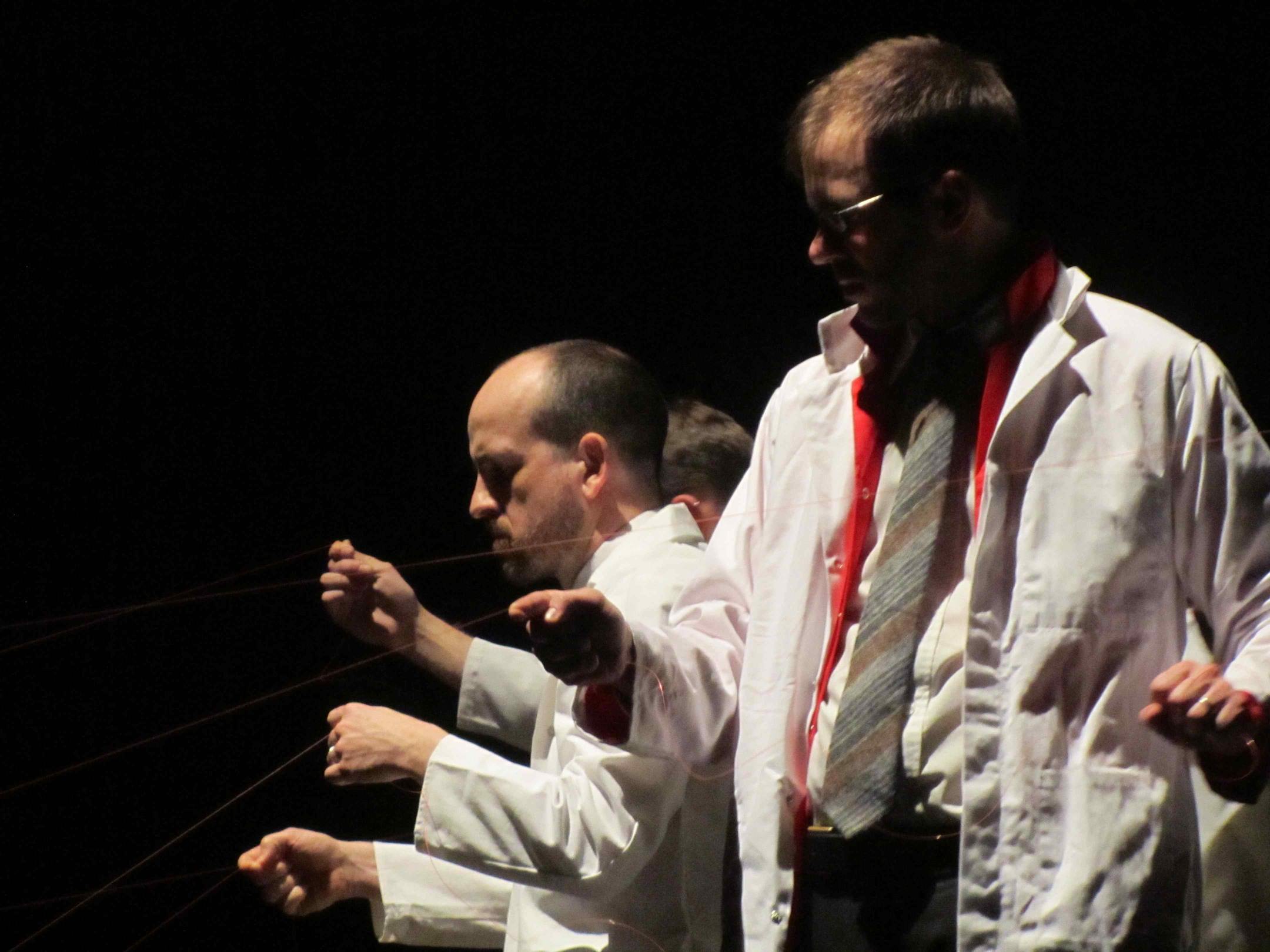
It’s about this time that a local chef joins the stage, and begins to cook the pork, and the sizzling is incorporated into the music. The smell is remarkable, surreal, somewhat disconcerting, adding a certain layer of tension as the band create incredibly fractured, at times noisy dance music. As the food is plated up the band retreat to a dining table, and Herbert to the mic, where he sings a beautifully touching ode to enjoying the time you have. Then he feeds us.
It’s a show that has everything; incredible musicianship, a remarkable thought provoking conceit that takes you out of your comfort zone and makes you consider the food you eat, dazzling theatricality, and of course some great crackling.
MIRA CALIX – Fables and Other Works – Melbourne Recital Centre
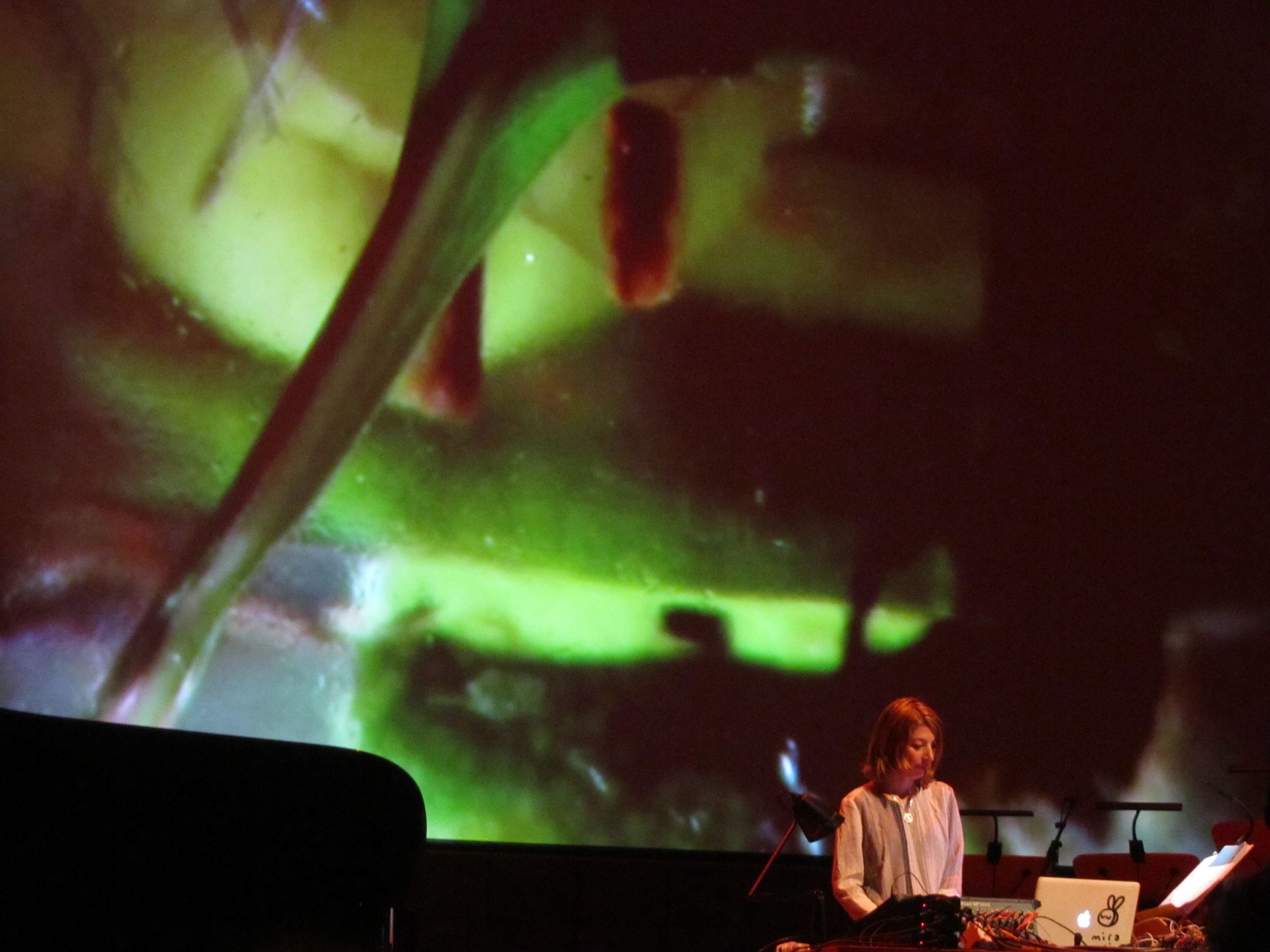
UK artist and composer Mira Calix is renowned for her five albums on Warp, though she’ increasingly moved from predominantly solo electronic works to multidisciplinary collaborations and commissions incorporating more classical orchestration. These days her bread and butter tends to be installations, orchestras, operas and festivals. But to many of us she’ll simply be known as the bug lady, after she unleashed 2004′ Three Commissions, where she was given the keys to the kingdom to create her work. Or perhaps more particularly the bugs to the kingdom, where her electronics interacted with insects and the London Sinfonietta on the piece Nunu.
There are bugs on stage tonight in a little glass fish bowl to the right of the stage and during the quieter moments you can hear their calls. They sound like crickets.
Tonight’s works come in the main from site-specific instillation works, from her collaborations with neuroscientists, mineralogists and entomologists. The thing about Mira Calix is that she loves to collaborate with science.
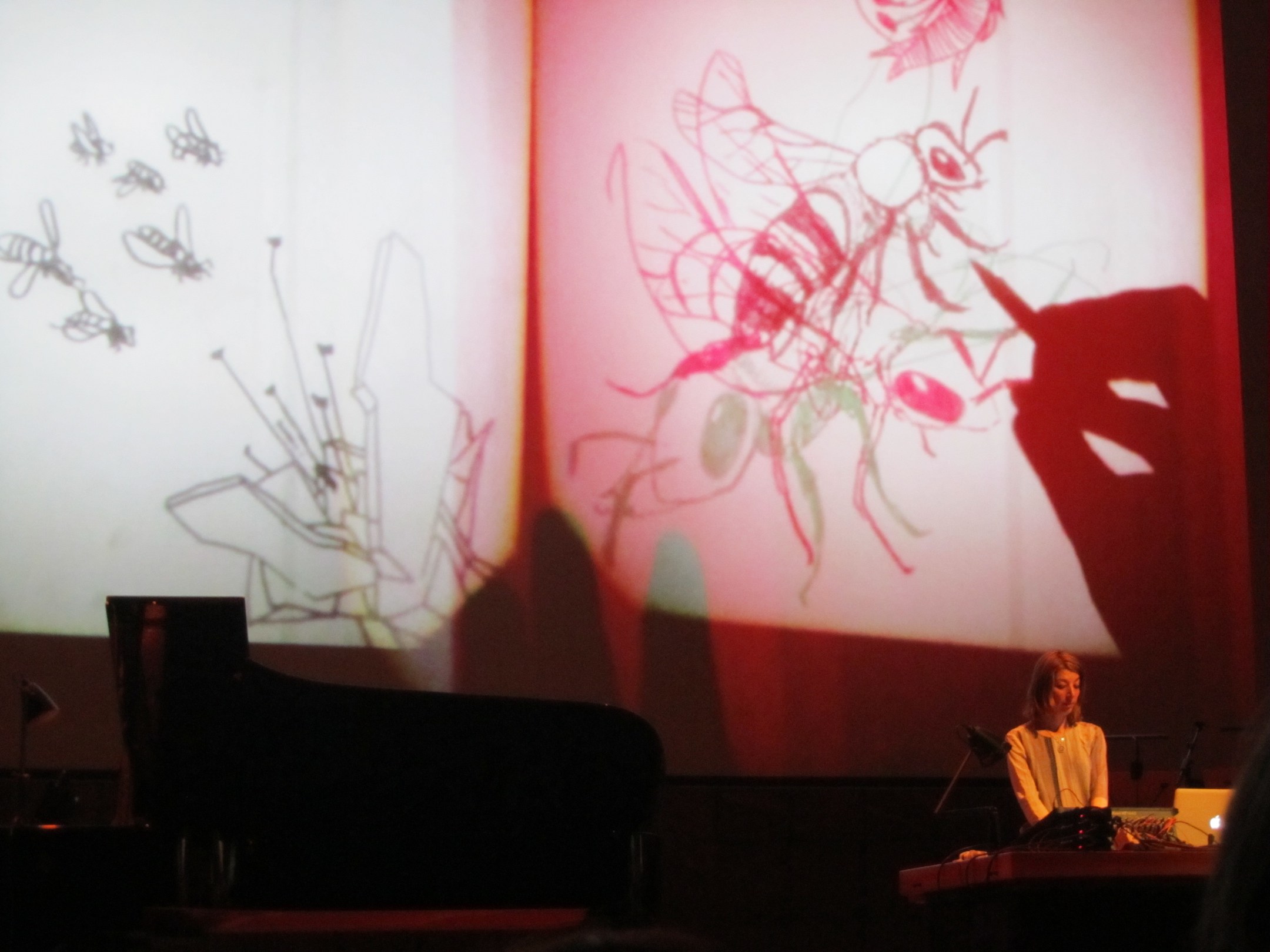
She begins with the bugs. The screen behind her comes to life and we’re greeted with Ken Burns style pans across intensely colourful insects in jars. Calix is joined on stage by strings and cello, who pluck haphazardly at their instruments and it feels like some kind of jungle chorus. The tune is an interpretation of Nunu off the aforementioned Three Commissions, with Calix building and manipulating the insect sounds until they interact with the classical instrumentation. It’s a beautiful immersive work that seems to take nature documentaries as a cue in terms of the classical accompaniment that is regularly used for score, yet simultaneously circumvents them by developing a very real interactive relationship with what is usually the subject: the insects themselves. This pushes the music into new and unexpected directions.
Later she’ joined by a large vocal choir and her more recent interest in classical orchestration becomes increasingly apparent, particularly her interest in the human voice. Piano and strings join the voices, with Calix occasionally bringing in some bottom end drone, but in the main her sonic contribution is minimal and quite subtle. Her ensemble, made up of piano, violin, viola, cello and clarinet play pieces by Ades, Ligetti and Saariaho, but in the main it’s Calix’ own compositions, and they’re very much placed in this new music modern composition world. One of her pieces is all new, a commission from this very festival. He Fell Amongst the Roses is based upon data Calix gathered from a unique panel of wood from the Recital Centre, that she then mapped on a scale and outputted as piano music. It’s safe to say that whilst her pieces might confound, with their unusual structures and at times odd orchestration, it may be explained by these kinds of unusual methods of composition, and this is what makes her idiosyncratic music so fascinating.
MIRA CALIX – Looking For Cowslips – Salon (Melbourne Recital Centre)
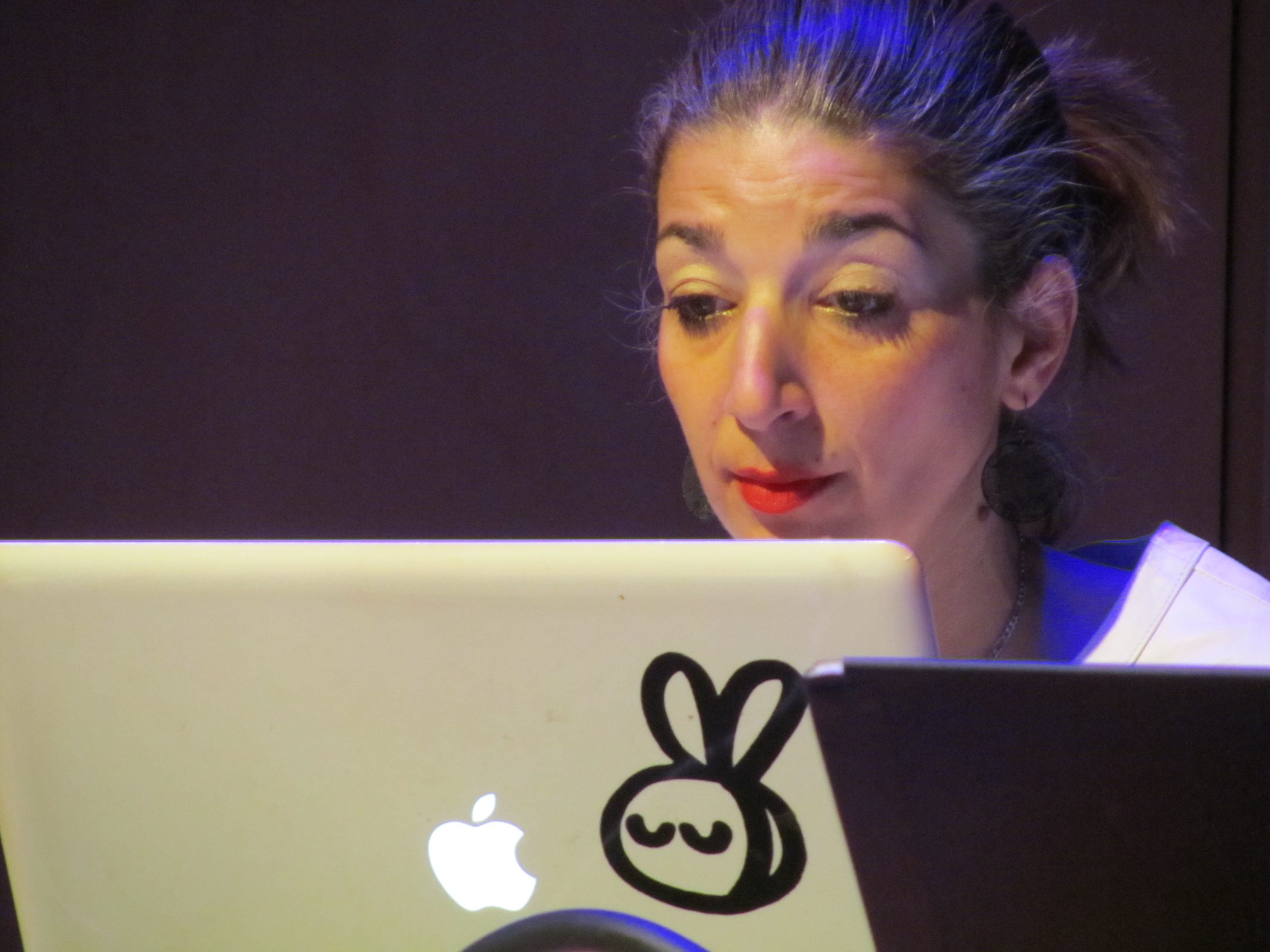
The following afternoon Calix is in the Salon for a more intimate performance, of her text-heavy repertoire that she’ placed under the banner Looking For Cowslips. It’s a body of work that is quite wordy, much more so than the previous night and necessitates a soprano, offering such nuggets as “I heard about this woman who at 37 weeks the cord was wrapped around … and all these stories come my way.†This text comes from Toby Litt and the music from UK composer Emily Hall. For Calix, who is much more relaxed and attempting to shake off a Moscow flu, it’s an opportunity to present work from some of her favourite writers and composers. Two of the best pieces in particular come from an opera score she composed for the dark ominous, Dead Wedding, with both works imbued with a palpable feeling of unease.
Joined by similar instrumentation to the previous night, clarinet, cello, viola, piano and violin, Calix watches proceedings with a wry smile from behind her laptop and large mixing desk. The melodies generated by her players are simple, uncluttered, working off notation, often pausing, providing space for delicate electric flourishes, a pluck or a plink, and then it’s a return to the sparse somewhat restrained melodic material. Later Calix brings in disembodied voices and a few electronic harp notes.
These works today are all new music classical performances, without too much overt injection from Calix, aside from towards the end where she brings in big soupy bombastic, almost dance music, which is both somewhat of a shock, even out of place considering the stately experimentation that preceded it.
Tonight is a real demonstration of how far Calix has progressed from her earlier, more electronic works. The comfort and affinity she displays with the classical orchestration produces some really challenging and memorable work, not to mention possibly the last thing you would expect from someone on Warp’ roster.
Bob Baker Fish


